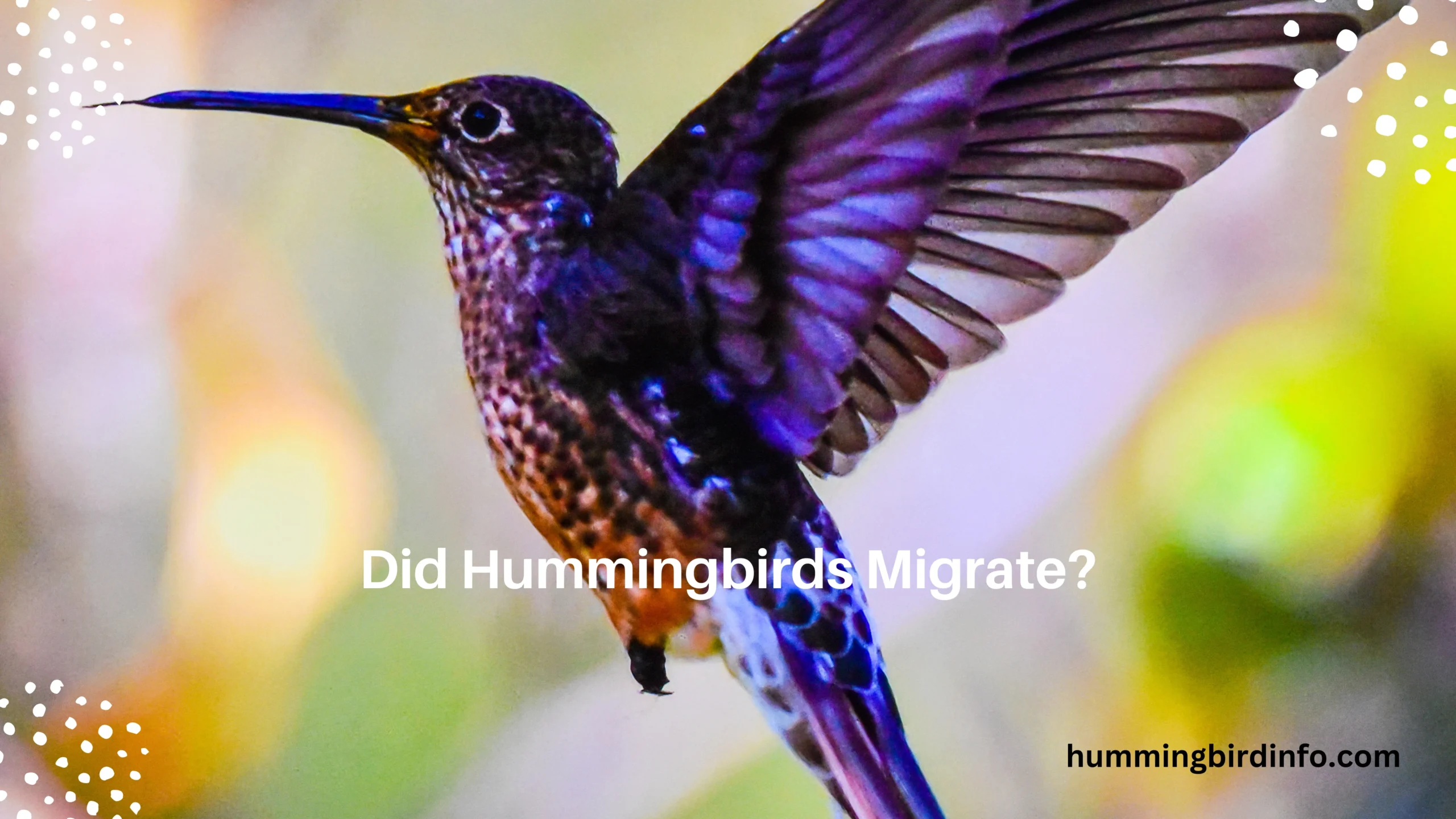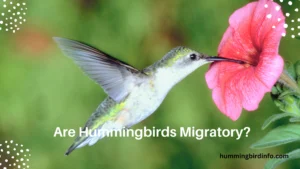Hummingbirds are among nature’s most mesmerizing creatures — tiny, shimmering, and almost always in motion. Despite weighing less than a nickel, these birds perform some of the greatest migratory feats in the animal kingdom.
They move with such speed, precision, and grace, it’s hard to believe they also endure long, demanding journeys every year.
Yes, many hummingbirds migrate — flying thousands of miles between breeding grounds in North America and wintering areas in Central and South America. Their wings beat up to 80 times per second, yet they can cross massive obstacles like the Gulf of Mexico, a nonstop journey lasting up to 20 hours.
This seemingly impossible feat is a natural marvel, defying all expectations of what a small bird can achieve.
In this blog post, we’ll explore the fascinating world of hummingbird migration. From the species that migrate and their exact routes, to the science behind their flight and the challenges they face, we’ll uncover the mystery and magic behind this epic journey.
By the end, you’ll see hummingbirds not just as tiny jewels of the sky, but as champions of survival, resilience, and adaptation.
Contents
Which Hummingbirds Migrate and Where Do They Go?
Not all hummingbirds migrate, but many North American species do. Ruby-throated, Rufous, Black-chinned, and Calliope Hummingbirds are well-known for their epic seasonal travels across continents.
The Ruby-throated Hummingbird flies solo across the Gulf of Mexico, a 500-mile journey with no stops. The Rufous Hummingbird has one of the longest migrations for its size, traveling from Alaska to Mexico and back each year.
These birds breed during spring and summer in areas like Canada, the United States, and even Alaska, depending on the species. In fall, they head to Mexico, Guatemala, Costa Rica, or South Florida to escape the cold and find food.
Migration is triggered by daylight changes, not temperature. As days grow shorter, these tiny travelers instinctively know it’s time to begin their incredible journey.
How Hummingbirds Prepare for Their Epic Flight
To migrate, hummingbirds need massive amounts of energy. Their flight takes a toll on their tiny bodies, so preparation is essential.
They enter a phase called hyperphagia, where they eat constantly — especially nectar and protein-rich insects — to build fat reserves that fuel their long-distance travel.
A hummingbird can nearly double its body weight before migration. This fat isn’t excess — it’s carefully stored energy, enough to keep them flying for hundreds of miles.

Their physiology is built for endurance. Their metabolism is incredibly fast, and their hearts beat more than 1,200 times per minute during flight.
They also enter torpor, a hibernation-like state that slows their metabolism and saves energy overnight. This helps them survive when food is scarce mid-journey.
Challenges Hummingbirds Face During Migration
Migration is filled with risks. Along the way, hummingbirds face predators like hawks, snakes, and even large insects that hunt them during stopovers.
Weather conditions can be deadly. Storms, strong winds, and cold snaps may delay or exhaust hummingbirds, especially during the Gulf crossing, where there’s nowhere to land.
Habitat loss is another serious concern. Without rest stops rich in flowers and insects, migrating hummingbirds can’t refuel — and may not survive.
Humans also pose threats. Glass windows, cars, and pesticides contribute to countless hummingbird deaths each year.
Still, they endure — fueled by instinct, energy, and some of nature’s most powerful survival strategies.
The Mysteries and Science Behind Hummingbird Migration
How do these birds know where to go — especially young hummingbirds who’ve never migrated before? Scientists believe it’s a mix of instinct and environmental cues.
They may navigate using the sun’s position, the Earth’s magnetic field, and landmarks along the way. It’s still a mystery how such a small brain can guide such complex travel.
Researchers track their movements using banding, radio tags, and geolocators, revealing fascinating insights about their paths and habits.
Some studies even use stable isotope analysis to determine where birds were born and where they’ve traveled, just from a feather sample.
Yet much is still unknown — including exact routes, timing variations, and the full extent of their migratory memory.
Conclusion:
Hummingbirds, though small, make one of the most incredible migrations in the natural world. They cross continents, brave danger, and adapt in ways that continue to amaze scientists.
Their journey shows just how resilient and intelligent nature can be. From Canada to Costa Rica, these birds are flying proof that size doesn’t limit what’s possible.
To keep witnessing these wonders, we must protect their habitats, support pollinator-friendly plants, and limit harmful human impacts on their paths.
In the end, hummingbirds remind us of the beauty of endurance, the power of instinct, and the miracle of migration — a story that’s written in the sky, year after year.
FAQs
1. Do all hummingbirds migrate?
No, not all hummingbirds migrate. Some species live year-round in tropical regions with stable food supplies.
2. How far do hummingbirds migrate?
Some travel over 3,000 miles. The Rufous Hummingbird, for instance, flies between Alaska and Mexico every year.
3. When do hummingbirds migrate?
Most migrate in spring (March–May) and fall (August–October), depending on the species and location.
4. How do hummingbirds know when to migrate?
They sense changes in daylight, which trigger hormonal changes telling them it’s time to begin migration.
5. Do hummingbirds migrate alone?
Yes, hummingbirds migrate individually, not in flocks. Even young ones travel alone, guided by instinct.
6. How do they survive such long flights?
They store fat, use efficient flight mechanics, and may enter torpor to conserve energy on the journey.








